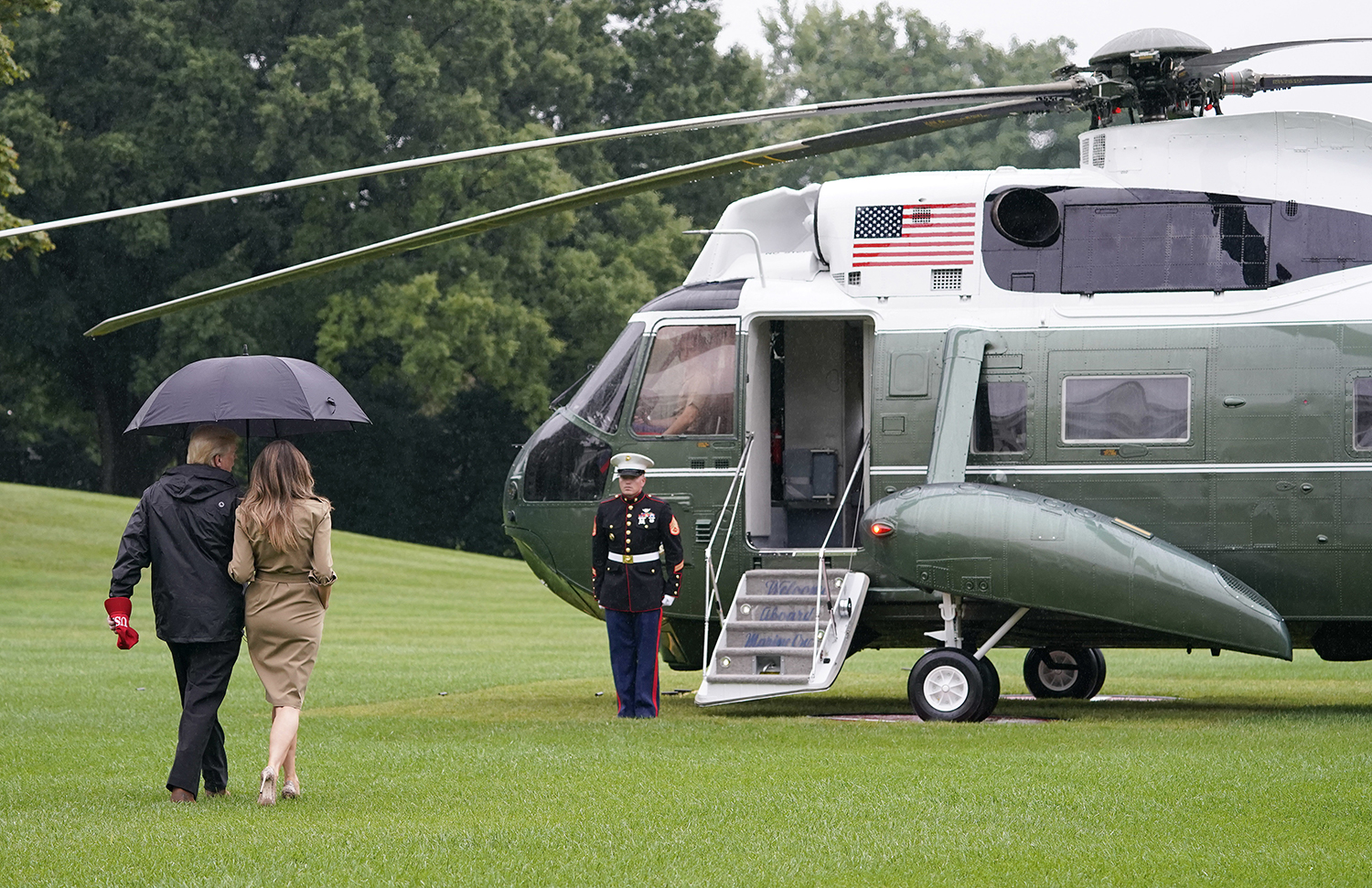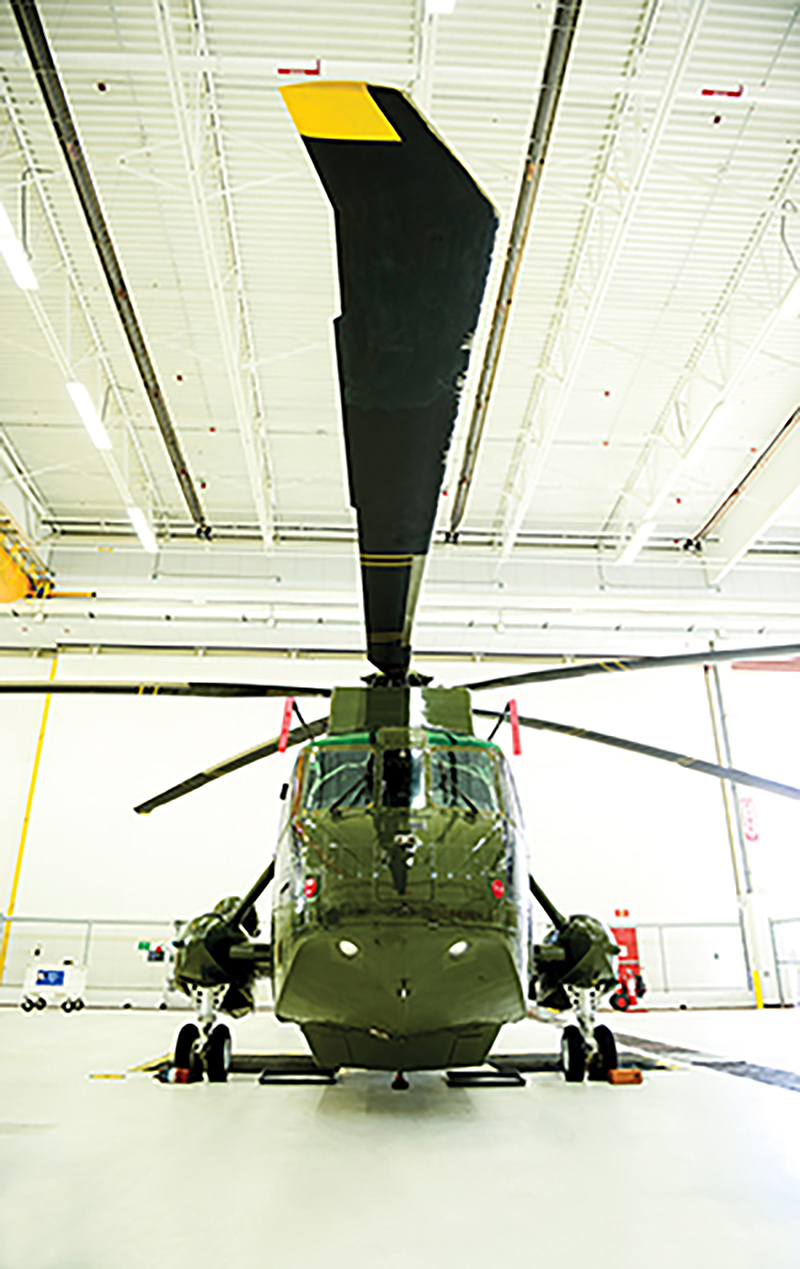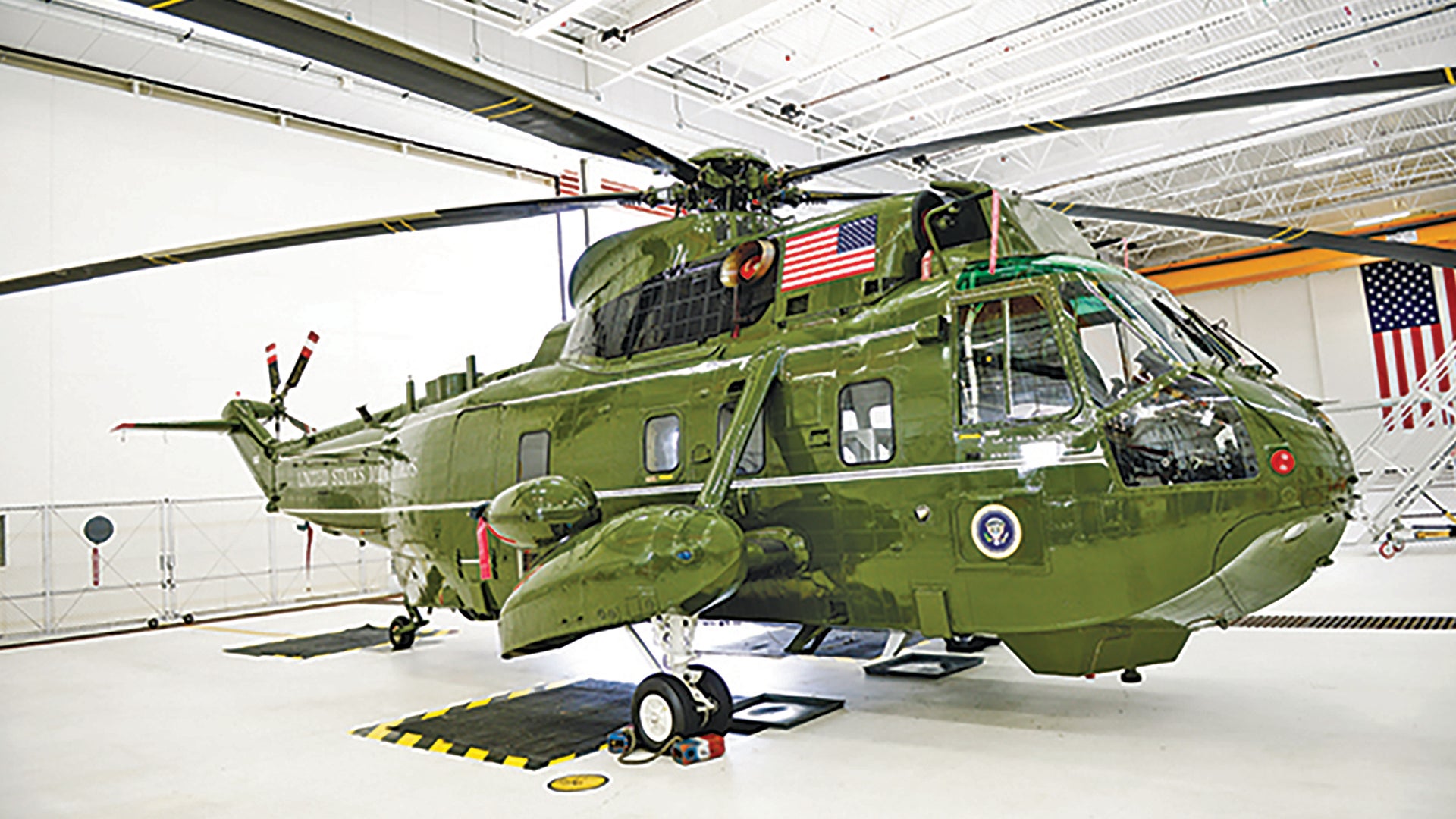It’s always cool to see an old aircraft get a second chance at life, but one that gets a third chance, that’s rare. One unique helicopter with a special history was recently awarded just that.
NVH-3A bureau number 150614 first entered service 45 years ago, in 1972. During its youth it toted around Presidents Nixon and Ford as “Marine One.” It later served with Helicopter Combat Support Squadron HC-6 where it got flown heavily. In the early 1980s, after putting some 4,500 hours on its meter, the Sea King was sent to storage at Davis Monthan AFB’s sprawling boneyard.
In the late 1980s “614” was pulled from storage and regenerated to flying status so that it could act as a test aircraft at the Navy’s premier aircraft test center—NAS Patuxent River in Maryland. It lived its second life as a surrogate test aircraft for the fleet of “White Top” VH-3Ds flown by HMX-1. When the President is onboard these aircraft famously go by the callsign “Marine One.”

The Presidential airlift mission is extremely dynamic, demanding, and critical to national security. In addition to being flown all around the U.S. and the world to support the President’s travels, VH-3Ds and VH-60Ns based at Naval Support Facility Anacostia have to be ready without notice to grab the President from the White House and whisk him off to a safe location, hopefully before an enemy attack can arrive.
With these factors in mind, the nearly antique VH-3D fleet needs to be reliable and a special maintenance program has been devised and implemented to see that they are. These helicopters are literally “caged off” from their “green top” counterparts in a high security maintenance hangar at HMX-1’s base in Quantico, Virginia. There they get special care and more frequent inspections than pretty much any other helicopters flying today.
On top of that, even though the VH-3Ds are old, they have to be constantly refitted with upgrades to lessen the impact of their increasing age. They also have to be outfitted with the latest survivability capabilities, which include various infrared countermeasures systems. Their communication system also need to stay cutting edge so that the President can stay in contact with the National Command Authority and his cabinet at all times.

All this systems integration work and development of updated operating procedures requires testing, and that’s exactly what NVH-3A “614” did for Air Test and Evaluation Squadron 21 (HX-21) up until 2013.
That year, 614 was assigned to be the test platform for the VH-3D Cockpit Upgrade Program (CUP), which would finally see the VIP Sea Kings receive a modern glass cockpit. In preparation for this work, the helicopter was totally stripped of its avionics, including its wiring harness. Then the program was abruptly cancelled.
By 2014, with 614 now a useless gutted hulk, HX-21’s creative maintainers began putting a plan together to return the four decades old helicopter back to service as the VH-3D fleet would be soldiering on for years to come. This was not a task that maintainers usually do. This type of work usually happens at dedicated depot facilities that concentrate on totally overhauling airframes, not by people who focus on keeping them flying from day to day.
Although some of the parts needed for the resurrection could be ordered from Sikorsky, with the Sea King being out of production for so long, many elements required for the restoration simply didn’t exist, so the HX-21 team built them from scratch. Over 200 parts were custom machined so that 614 would have a chance at flying again, and each one had to go through a stringent engineering approval process.
While the team from HX-21 was basically rewiring the entire airframe, they also updated many of the helicopter’s other major components. This would allow 614 to better represent the VH-3Ds flying operationally with HMX-1 than it ever did in the past.
Along with updated avionics, which were still made up largely of “steam gauges,” the helicopter’s rotors, drivetrain, turbine engines, landing gear, and fuel system were all replaced with the latest standard equipment. One element that didn’t get touched was the helicopter’s ’70s era VIP interior—a far cry from the internal cabin configuration of VH-3Ds that fly the President around today.
Dwight “Chic” James, the Presidential Helicopter fleet’s quality assurance officer (no stress in that job right?) stated the following to Naval Aviation News:
“We had to create a manufacturing quality assurance process, which is different than what we normally do in a maintenance environment… I don’t know if anybody on that crew has done this volume of work on a particular aircraft.
Before, the aircraft had some VH-3D-like systems in racks. The avionics were in racks in the cabin and that’s how they had to use them… The right-hand side of the cockpit was the only VH-3D portion, and now the entire ship is essentially a VH-3D aircraft.”
On April 4th, 2017 614 took to the air in a hover once again, which evoked huge pride from everyone involved in the unique and highly challenging initiative. The helicopter is now actively involved with multiple upgrade programs for the VH-3D fleet, including lighting upgrades, flight program changes, and enhancements to the system that performs rotor track and balance for the high-profile helicopters.

With 614 flying again, HX-21 won’t have to borrow a fleet VH-3D for testing. This is a very good thing because the White Top VH-3D cadre is in extreme demand even as they enter the twilight of their service lives.
As of now, the first VH-92 replacement aircraft for the current White Top Presidential Airlift fleet won’t enter operational service until after the turn of the decade. The earliest possible declaration of initial operating capability is expected to be sometime in 2020, at which time the drawdown of the VH-3D fleet will finally begin. So even if things go perfectly, 614 has years of work left supporting the VH-3D fleet.
Regardless of when the VH-3D fleet meets its final demise, being left for nearly dead twice in its career, the 45 year old #614 is now more capable and up to date than it has ever been. That’s a testament not only to Sikorsky’s iconic Sea King design, but also to the talented problem solvers over at HX-21.
Contact the author: Tyler@thedrive.com
